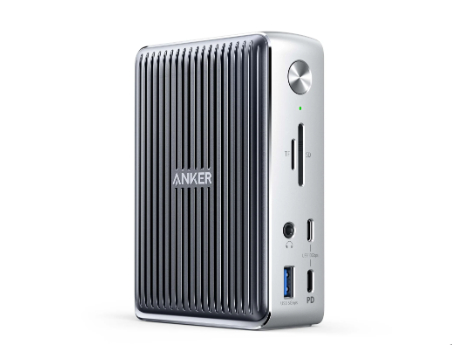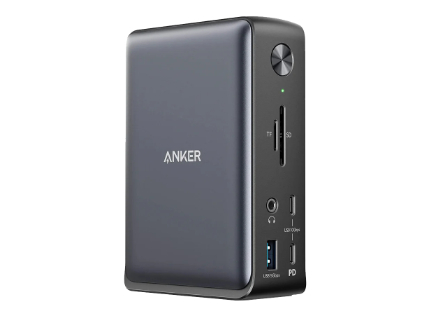When selecting a docking station for your laptop, the choice often narrows down to portable or stationary options. Your decision impacts not just your workspace setup but also your productivity and convenience. While there are merits to both types, understanding their features, benefits, and use cases can help you make an informed choice.
Ways to Choose the Best Station
Portable Docking Stations
The portable best macbook docking station is a lightweight, compact device designed for users who require flexibility. Professionals who travel frequently benefit from these solutions due to their ease of transport. Portable docks usually feature essential ports like USB-A, USB-C, HDMI, and Ethernet, making them suitable for tasks that don’t demand extensive connectivity. These docks typically draw power from the connected laptop, eliminating the need for an additional power source. Nonetheless, this could be a double-edged sword, as it might drain your laptop’s battery faster. Despite this drawback, the convenience and adaptability offered by portable docking stations are unparalleled. They are excellent for remote work setups, quick business trips, or shared workspaces where permanence isn’t practical. A prime example is Anker’s 575 USB-C Docking Station (13-in-1). Although versatile enough to be considered portable, it leans more towards the stationary category due to its extensive port configuration. Still, its compact design allows it to be relocated with relative ease when necessary.

Stationary Docking Stations
Stationary docking stations are designed with permanence and heavy-duty workload in mind. They are generally bulkier and sit on your desk, creating a dedicated workstation that maximizes productivity. These docks come packed with numerous ports, including DisplayPort, HDMI, USB-A, USB-C, Ethernet, and sometimes even legacy ports like VGA or serial connections. One standout feature of many stationary docks is their ability to support multiple display outputs. For instance, the Anker 575 USB-C Docking Station can simultaneously stream media to up to three monitors in 1080p@60Hz via its DisplayPort and dual HDMI ports. This capability provides substantial screen real estate, enhancing multitasking efficiency — a critical advantage for professionals involved in data analysis, graphic design, or video editing. Additionally, stationary docks often have their own power adapters, ensuring they don’t drain your laptop’s battery.

Choosing the Right Docking Station
Deciding between a portable or stationary docking station hinges on evaluating your specific needs and lifestyle. If your job involves frequent travel or working from different locations, a portable dock makes your life easier. It offers the basic functionality required for everyday tasks while being easy to carry. Conversely, if you predominantly work from a single location and require a powerhouse setup, a stationary dock like the Anker 575 USB-C Docking Station is indispensable. The added benefit of supporting triple display output enhances your workflow significantly. Furthermore, the peace of mind offered by an 18-month warranty and reliable customer service ensures that long-term productivity remains uninterrupted. Investing in a docking station is a step towards optimizing your digital workspace. Regardless of your choice, having one central hub to manage all your devices can declutter your desk, streamline your workflow, and enhance your productivity.
Conclusion
In conclusion, both portable and stationary docking stations have their own place in the modern digital workspace. Balancing flexibility and power with your specific working conditions will help you make the best choice. The Anker 575 USB-C Docking Station stands out with its impressive feature set, making it a versatile option for those leaning towards a stationary setup but needing occasional portability. Whichever you choose, a well-chosen docking station is a valuable investment in productivity and efficiency.











